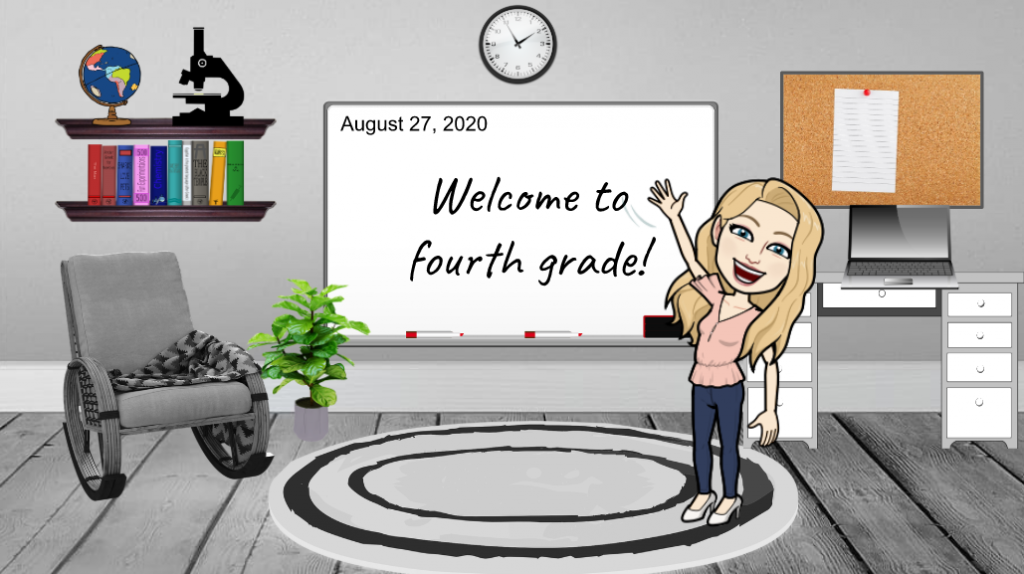
Teaching During COVID
The Shut Down
Back in March, the country seemed to shut down overnight. People were told to stay home for a couple of weeks due to the virus that was sweeping across the United States. Little did we know, two weeks would turn into several months–with no end in sight.
The Announcement
On Thursday, March 12th, I was at Let Me Run practice with some other teachers who coached, and the third and fourth grade boys who were in the program. Someone mentioned an email that they got, saying that the district was taking advice from the government and shutting down for a few weeks to slow the spread of the virus. I shrugged it off, thinking it wasn’t true.
Later that night, we got an urgent email from the principal calling for an emergency meeting the following morning. We were closing down, and we needed to hear the information and plan. That’s when it hit me–this was happening.
24 Hours
All of the teachers got to school early the next morning for the meeting–even the teachers who were typically walking in the door with their students. We sat down to listen to the principal, and he told us that we were shutting down for at least three weeks. We were to send anything home that the students might need for those three weeks of virtual learning.
All support teachers were on “help” duty–we were supposed to check in each classroom to see what the classroom teachers needed (I was an intervention specialist at the time, meaning I didn’t have a homeroom class). I spent the whole day running around and stuffing as much as I could into backpacks.
The hardest thing was talking to the students about it. They always have questions even if we are able to give them clear information, and we didn’t know what was going on either. I was just extremely honest with them, and tried to keep them calm (even if I wasn’t feeling calm myself).
Obstacles
There were several obstacles to shutting the schools down so quickly. Teachers didn’t have time to plan anything out, so we didn’t know exactly what to send home with the students.
Each family was receiving a Chromebook to share during those three weeks. The oldest child in each family would take it home, and the family had to work out who got the Chromebook when.
We didn’t have materials printed or organized to send home. Even if we knew what to send, teachers typically don’t make materials weeks in advance. The aides in the school were helping to make the materials, but there just wasn’t enough time to get everything together for every teacher.
Teachers are trained in technology, but most of the training is focused on how to implement technology into a traditional classroom. Even graduating a few years ago, I didn’t know how to teach students who weren’t right in front of me.
We didn’t get to prepare the students. Good teaching includes modeling and practicing prior to asking the students to do it by themselves. Students didn’t get taught how to use Google Classroom of Google Meet or Zoom before we wanted them to do it all on their own. Trying to teach them how to use any of the technology from a distance is really difficult.

Fear
The whole time everyone was trying to figure out what they were doing, everyone was also worried. We were told that we were shutting down for three weeks, and the goal was to get back to school as soon as possible. Based on what we heard, and the tone of the information we were getting, it sounded like no one was sure when we would be back.
It’s really hard to hide your emotions from your students. At this point in the year, we had already spent so much time together that they could read me really well. I was nervous and anxious. I hate not knowing what’s going on. They picked up on it.
My main concern wasn’t getting materials sent home for students to “figure it out” on their own. My main concern was explaining what was happening and making sure that they were okay. Luckily, some of my most anxious kiddos didn’t come to school that Friday. I was sad that I couldn’t say goodbye, but I was also glad that my anxiety wouldn’t add to theirs.
Teaching Virtually
My district has calamity days built into the school year, so the district gave us those five days off to figure out what we were doing, then we were supposed to start teaching virtually.
The Good
I’m glad that we didn’t shut down until March, and I had the whole school year to build relationships with my students and their parents. My parents were already on Class Dojo, and we communicated regularly. I already knew my students, so I was able to figure out how to motivate them to get on Zoom with me for IEP minutes and lessons.
My colleagues and I made folders with activities that we would work with them on virtually during our lessons. I made schedules for each student, so they knew when I would meet with them every day. I even set up office hours so students could come for help for their general education assignments.
Even with all of the changes, and how quick they were, my students were all amazing with how well they adapted. I had almost full participation during the last couple months of school. If a student forgot to get on, I would message parents to remind their kids that I was waiting for them. It was a great system!
The Bad
Technology is hard to figure out under pressure. I like to play around and get comfortable with what I’m doing before I try to teach it to students. It was hard to figure out what worked and what didn’t work, and it was even harder to explain how to do things without being able to model on the board.
Anytime there were issues with technology at school, I could try to figure it out by playing with the students’ Chromebooks or I could ask another teacher. With distance learning, if there was an issue, I couldn’t help the student fix the problem very easily.
I had one student who had a broken microphone in his Chromebook, and we couldn’t hear him talk anymore. Another student couldn’t log into his computer anymore. It was a nightmare.
The Ugly
The worst parts of distance learning was not being able to be with our kids. My students had a lot of emotional needs, and some of them just need a hug or a high five to motivate them to keep going. It was hard to get them to want to work when they weren’t getting the emotional support that I would typically give them at school.
If a student got frustrated, there was nothing stopping them from leaving the room where their Chromebook was, or leaving the meeting entirely. At school, I would just follow the student and let them cool off, but if they left during a virtual lesson, there was nothing I could do about it. I feel like it put some strain on the strong relationships that I had worked hard to build.

The End of the Year
At the end of the year, we usually get to do a whole bunch of fun stuff, like field trips, field day, awards, and parties. It was the best time of the year because it was a celebration of how much they learned from the year. With ending the school year virtually, the most I could do was a virtual “party” with virtual “awards”.
The students seemed excited that we were still doing something fun, but it was extremely bittersweet. I found out just before my last meeting (minutes before) that I was being moved to a different position at a different school next year. Luckily, I had already been trying to find a position within the district.
Transitioning to Fourth
Sometime in June, I got offered a fourth grade position at a new school. I was THRILLED. I couldn’t wait to get back into the classroom, and to work for a different employer.
The pandemic is still going on, and with me living in Columbus, it’s still pretty serious. There’s a mask mandate for when you go into public buildings, and it’s still encouraged to stay six feet away from other people. Because of this, my transition into my new position is looking very different than it was supposed to.
Meeting People
Starting at a new school is hard for a student, but it’s also hard as a teacher. You have to learn a whole new set of faces and names, and you have to figure out group dynamics and build relationships. Meeting new people is hard already, but it’s even harder if you have to do it virtually.
I had my interview over Google Meet, and I’ve only been able to interact with my new colleagues over email and Google Meet. Everyone seems super nice already, but it’s really hard to get a feel for everyone when you only see their faces on a screen.
Training
Thankfully, this year I get to join in with district trainings, and they have been super helpful so far. I have been able to practice using Google Meet (I used Zoom in the spring with students because it was easier) and learn how to make learning interactive virtually.
Along with being trained in the curriculum, I have been able to learn different tools and tricks from my colleagues. I not only feel more comfortable with teaching virtually, but I’m actually excited!
The Plan
I had the opportunity to meet with my new team virtually, and we started making a plan for the beginning of the year. I made a virtual classroom website where students can click around to find their materials and resources, and they can click on my Bitmoji to go to our Google Meets room.
Now that I feel more excited and comfortable with teaching virtually, I’ve been spending a lot of time exploring and trying to figure out how to keep students engaged even without being in the classroom with me.

I made a Google Slideshow into a virtual classroom by adding pictures and linking materials, resources, and assignments to the images I added into the classroom. You can link other slides in the slideshow to images, which is how I made the reading nook, schedule, and work station pages.
After making the slideshow, you can make a free Google Site and upload the slideshow onto the page. Students will be able to click through and see everything easily!
Growth Over Fixed Mindset
In the spring when everything changed suddenly, teachers were in “survival mode”. We had to do what we could to help students with no time to digest what was going on or how to do what we needed to do. Since we have had time to figure it out, I want to look at this as an opportunity instead of just “surviving”.
Yes, this is not what I wanted when I decided to become a teacher. This isn’t as fun as being in the classroom and watching the light bulbs go off or joking around with our students. I want to look at this as a way to grow the way we think of education. This is a way for us to teach independence and enjoy learning alongside our students.
To all the teachers out there: I wish you the best of luck during this time. It’s hard for everyone, and I know not everyone can enjoy this time as much as I have. I truly hope that we can get back to teaching in person soon. Until then, happy learning!





